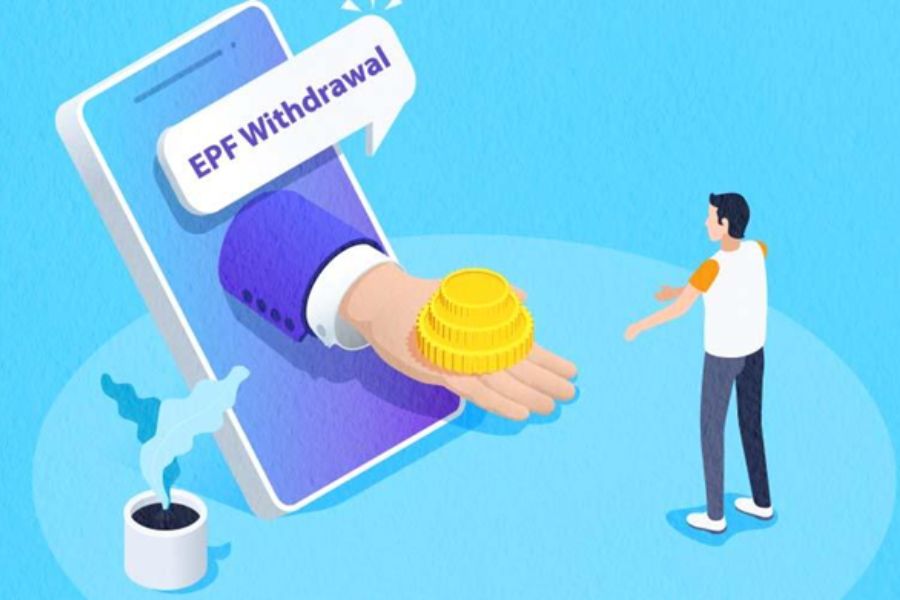Employees' Provident Fund (EPF) is a retirement savings scheme for salaried individuals in India. It is a long-term saving option that helps individuals save for their retirement. The Employee Pension Scheme (EPS) is a part of the EPF scheme that takes care of the employee's pension benefits. Both these schemes are managed by the Employees' Provident Fund Organisation (EPFO).
If you are planning to leave your job or have already left your job, there are certain steps that you need to follow to withdraw your EPF and EPS money. In this article, we will discuss the steps required to withdraw your EPF and EPS money.
The first step is to fill the EPF Form 19, which is available on the EPFO portal. The form requires you to fill in your personal details, such as your name, date of birth, and PAN card details. You also need to mention your EPF account number, the name of your previous employer, the reason for leaving your job, and the date of leaving the job. You also need to fill in the bank account details where you want to receive the money.
Along with the EPF Form 19, you need to submit some documents to the EPFO. These documents include your PAN card, Aadhaar card, cancelled cheque leaf, and a copy of your bank statement or passbook.
Once you have filled in the EPF Form 19 and attached the required documents, you need to submit it to the EPFO. You can submit the form either online or offline. If you choose to submit it online, you need to log in to the EPFO portal and upload the form and the documents. If you choose to submit it offline, you need to submit the form and the documents to the EPFO office in your region.
Once the EPFO receives your form and documents, they will verify them and process your withdrawal request. The EPF money will be credited to your bank account within 15-20 working days.
To withdraw your EPS money, you need to fill the EPF Form 10 C, which is available on the EPFO portal. The form requires you to fill in your personal details, such as your name, date of birth, and PAN card details. You also need to mention your EPF account number, the name of your previous employer, the reason for leaving your job, and the date of leaving the job.
Along with the EPF Form 10 C, you need to submit some documents to the EPFO. These documents include your PAN card, Aadhaar card, cancelled cheque leaf, and a copy of your bank statement or passbook.
Once you have filled in the EPF Form 10 C and attached the required documents, you need to submit it to the EPFO. You can submit the form either online or offline. If you choose to submit it online, you need to log in to the EPFO portal and upload the form and the documents. If you choose to submit it offline, you need to submit the form and the documents to the EPFO office in your region.
Once the EPFO receives your form and documents, they will verify them and process your withdrawal request. The EPS money will be credited to your bank account within 15-20 working days.
Once you have received your EPF and EPS money, you can invest it to ensure a secure financial future. One option to consider is a Tax Saving Fixed Deposit.
A Tax Saving Fixed Deposit is a fixed deposit that helps you save tax. The interest you earn on the deposit is taxable. However, you can claim a deduction of up to Rs. 1.5 lakhs under Section 80C of the Income Tax Act.
A Tax Saving Fixed Deposit has a lock-in period of 5 years. This means that you cannot withdraw the money before the end of 5 years. However, if you do withdraw the money before the end of 5 years, you will have to pay a penalty.
Withdrawal of EPF and EPS money requires following certain steps that range from filling up forms to attaching documents, submitting forms and waiting for the process to complete. Tax saving Fixed Deposit is eventually one of the options to consider once you have received the EPF and EPS funds.
Disclaimer: This is a sponsored article and does not involve any editorial input. The views expressed, including any statements, views, opinions, announcements, declarations, or affirmations are neither supported, nor endorsed by The Telegraph Online.

